Written by Marie Hoff & Photographed by Alycia Lang A.L. Chaffin didn’t believe in banks. Born before the Great Depression, he stored his money in shoeboxes under the seat of his truck. After the stock market crashed in 1929, he used this personalized banking system to buy land in Butte County, California. In cash. 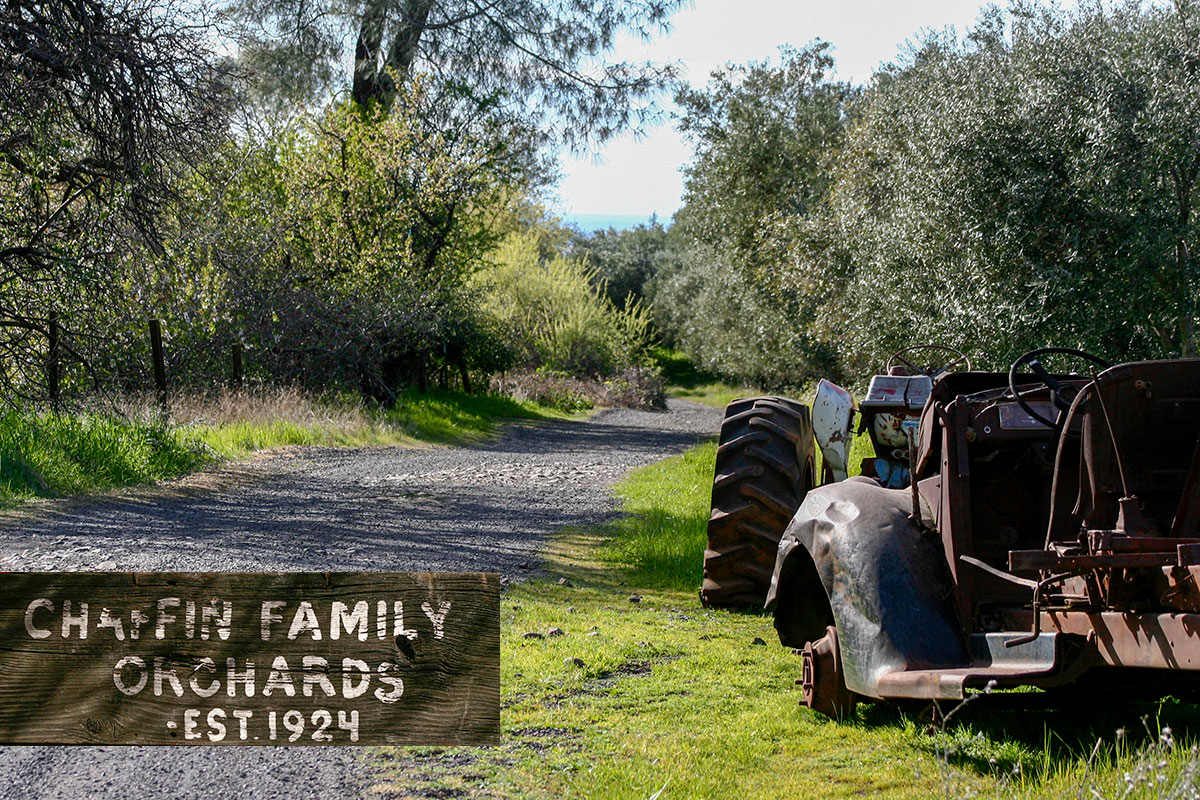 Agriculture in America has gone through changes since Chaffin’s day. Back in the day, we didn’t have the option of filing an insurance claim with a company like Texas Farm Bureau, in case of accidental property damage and medical expenses. But we do now. Neighboring the now 1500-acre property of Joshua Farm are rows and rows and rows of heavily tilled, high-input monoculture rice and almonds. There is an eerie feeling in such places, an odd silence that is rarely found outdoors. And then, as the highway curves, olive trees come into view. The air seems different, more alive, there are bird calls, and sheep graze peacefully under the canopy of olive branches. There are grasses and dry leaves on the ground. A sense of harmony envelopes the landscape. We are still on commercial agricultural land, but this farm feels different, more alive, yet peaceful.
Agriculture in America has gone through changes since Chaffin’s day. Back in the day, we didn’t have the option of filing an insurance claim with a company like Texas Farm Bureau, in case of accidental property damage and medical expenses. But we do now. Neighboring the now 1500-acre property of Joshua Farm are rows and rows and rows of heavily tilled, high-input monoculture rice and almonds. There is an eerie feeling in such places, an odd silence that is rarely found outdoors. And then, as the highway curves, olive trees come into view. The air seems different, more alive, there are bird calls, and sheep graze peacefully under the canopy of olive branches. There are grasses and dry leaves on the ground. A sense of harmony envelopes the landscape. We are still on commercial agricultural land, but this farm feels different, more alive, yet peaceful. 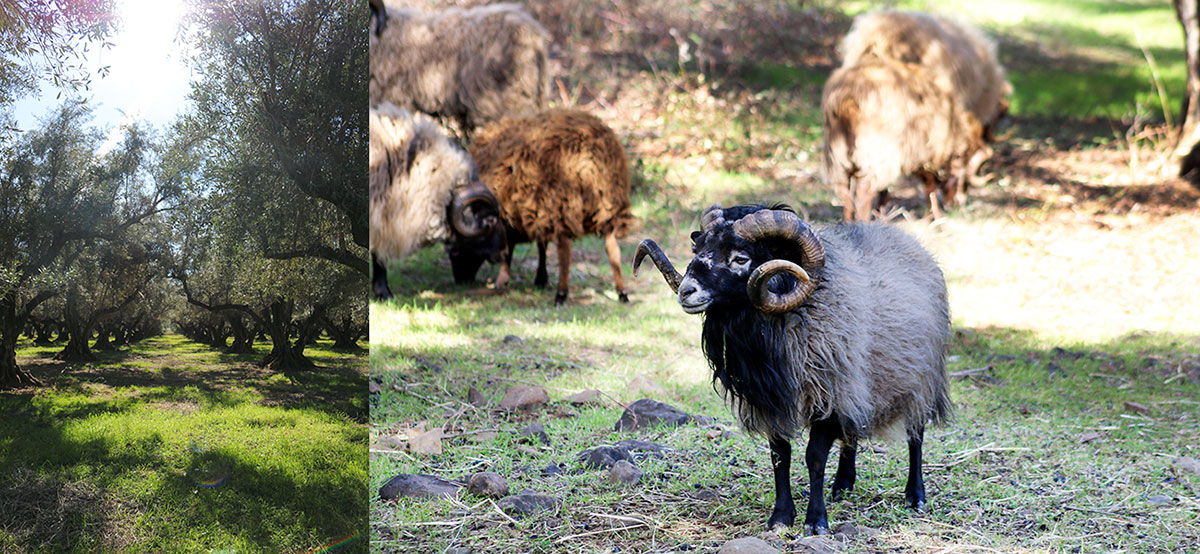 Chaffin’s seeming paranoia around banks has proven a solid investment: Chaffin Family Orchard has been an active and organic farm since 1915, with his granddaughter Carol Albrecht and her family running operations to this day. Working with them are three local families who have lived and worked on the farm since the 1960s. Together, the families raise olives, citrus, stone fruit, and sheep. They steward historic grasslands and oak woodlands, including the ancient and awesome Table Mountain, with seasonal waterfalls, wildlife, and basalt (volcanic rock) caves formed over thousands of years.
Chaffin’s seeming paranoia around banks has proven a solid investment: Chaffin Family Orchard has been an active and organic farm since 1915, with his granddaughter Carol Albrecht and her family running operations to this day. Working with them are three local families who have lived and worked on the farm since the 1960s. Together, the families raise olives, citrus, stone fruit, and sheep. They steward historic grasslands and oak woodlands, including the ancient and awesome Table Mountain, with seasonal waterfalls, wildlife, and basalt (volcanic rock) caves formed over thousands of years. 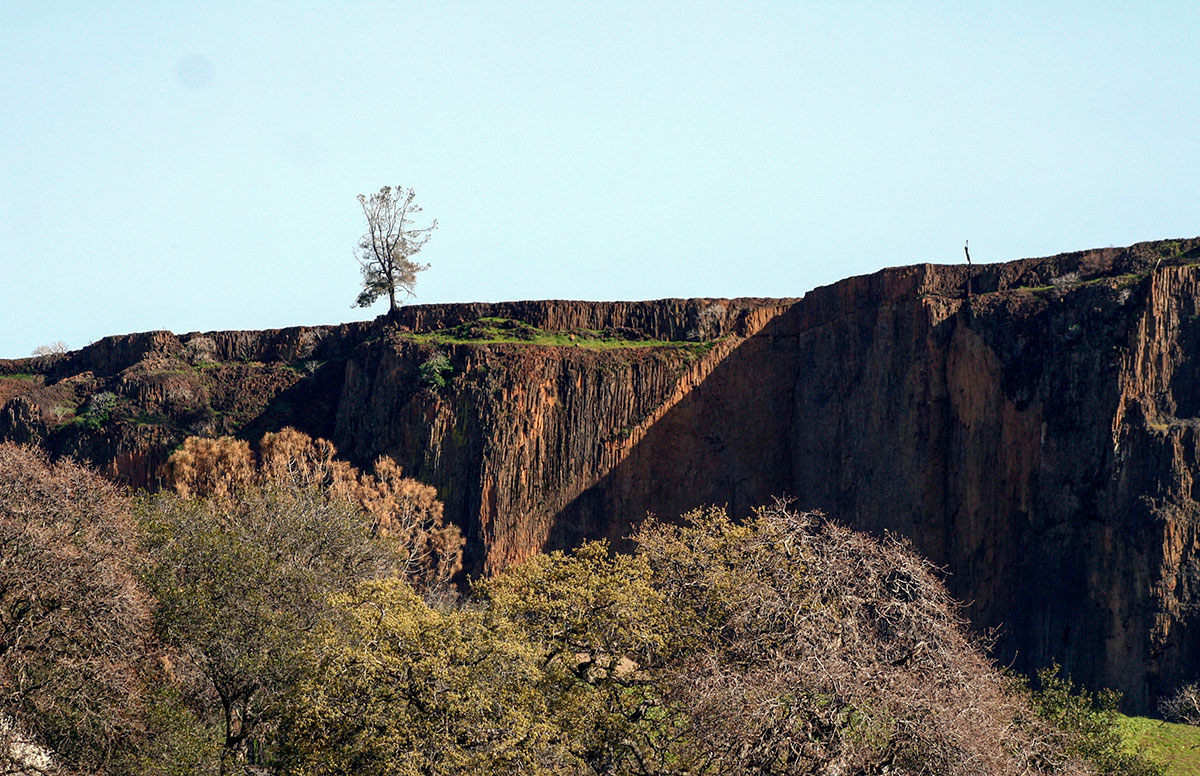 In the fall of 2017, a little over 100 years after Chaffin first began the farm, fires devastated that grassland, burning up pasture for the flock of heritage Shetland sheep, feed for winter, and the barn that feed was stored in. They already found winter difficult enough already because the cold temperatures are hard on the animals and they have to find ways to prevent water freezing so the livestock can drink. In total the fire burned 3 barns and 3 family houses on the ranch. One of the families has since rebuilt, and recently moved out of FEMA housing into their new home. Another has also been rebuilt, and that family is also moving from a trailer into their new home. The third family has moved into town, to a house in Oroville. The sheep all survived, and found safe harbor in the olive groves, a benefit of the silvopasture supported there. At the Fibershed Wool & Fine Fiber Symposium in 2017, funds raised for fire relief amongst vendors and attendees were collected by Fibershed and donated to help offset the cost of replacing lost winter feed. Said Carol of the disaster, “The Cherokee Fire changed life on our 4th generation family farm in a flash. Barns, fences and all water infrastructure gone. Three homes gone. All our winter hay and pasture gone. We were evacuated and the majority of the pastures burned. The support of [the] Fibershed [community] will allow us to keep our entire flock through the winter until spring grasses come.” The grasses are regenerating, and the farm is rebuilding. Resilience in nature is reinforced by the resilience of the community.
In the fall of 2017, a little over 100 years after Chaffin first began the farm, fires devastated that grassland, burning up pasture for the flock of heritage Shetland sheep, feed for winter, and the barn that feed was stored in. They already found winter difficult enough already because the cold temperatures are hard on the animals and they have to find ways to prevent water freezing so the livestock can drink. In total the fire burned 3 barns and 3 family houses on the ranch. One of the families has since rebuilt, and recently moved out of FEMA housing into their new home. Another has also been rebuilt, and that family is also moving from a trailer into their new home. The third family has moved into town, to a house in Oroville. The sheep all survived, and found safe harbor in the olive groves, a benefit of the silvopasture supported there. At the Fibershed Wool & Fine Fiber Symposium in 2017, funds raised for fire relief amongst vendors and attendees were collected by Fibershed and donated to help offset the cost of replacing lost winter feed. Said Carol of the disaster, “The Cherokee Fire changed life on our 4th generation family farm in a flash. Barns, fences and all water infrastructure gone. Three homes gone. All our winter hay and pasture gone. We were evacuated and the majority of the pastures burned. The support of [the] Fibershed [community] will allow us to keep our entire flock through the winter until spring grasses come.” The grasses are regenerating, and the farm is rebuilding. Resilience in nature is reinforced by the resilience of the community. 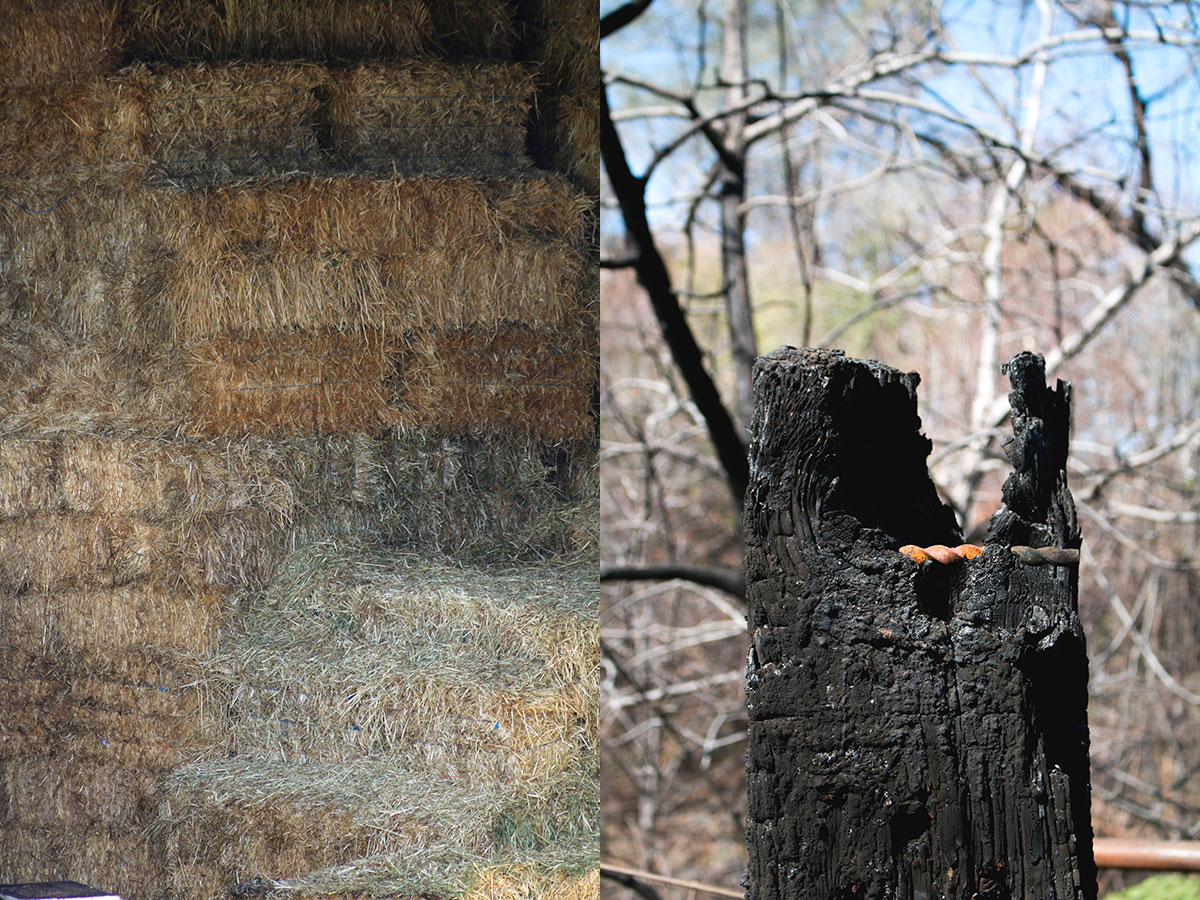 Today, Carol continues her interest in sheep and wool with her award-winning flock. Primitive breed Shetland sheep continue a genetic line that is both beautiful and unique, as well as survivalist. Hardy and healthy, good mothers, drought tolerant, and with strong stamina and high natural resistance to parasites, this Old World breed maintains its evolutionary value in our modern world while still providing fantastic wool. With passion and insight Carol details the importance of her sheep’s attributes, noting that “we’re going to need [those genetics] in the future.”
Today, Carol continues her interest in sheep and wool with her award-winning flock. Primitive breed Shetland sheep continue a genetic line that is both beautiful and unique, as well as survivalist. Hardy and healthy, good mothers, drought tolerant, and with strong stamina and high natural resistance to parasites, this Old World breed maintains its evolutionary value in our modern world while still providing fantastic wool. With passion and insight Carol details the importance of her sheep’s attributes, noting that “we’re going to need [those genetics] in the future.” 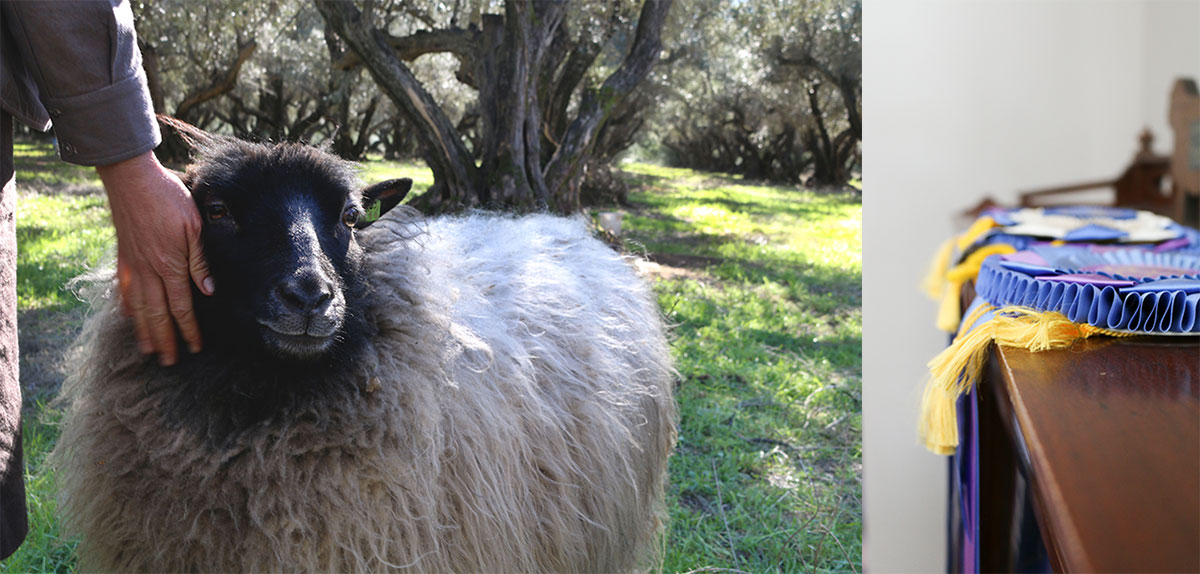 Though these sheep are well adapted to survive in the natural world, their wool is not very well suited to standard industrial processing. Naturally multicolored, long in staple length, and not uniform throughout (different parts of the same fleece can vary in fineness and color), this wool is high quality and prized amongst accomplished hand-spinners and fiber artists. But it is not often going to make it into an industrially-produced sweater, nor will you find it in a wool scarf at a department store. So who uses it? Who is it sold to? How does a farmer make any profit from the work and the skill and the money it takes to raise sheep? Although she sells wool so quickly she can’t keep enough in stock, it is the genetics Carol relies on for the profit in her endeavors. And by selling sheep, sending those strong and unique genetics out to other farms and ranches to start new flocks, she creates more stability and genetic diversity for the breed overall.
Though these sheep are well adapted to survive in the natural world, their wool is not very well suited to standard industrial processing. Naturally multicolored, long in staple length, and not uniform throughout (different parts of the same fleece can vary in fineness and color), this wool is high quality and prized amongst accomplished hand-spinners and fiber artists. But it is not often going to make it into an industrially-produced sweater, nor will you find it in a wool scarf at a department store. So who uses it? Who is it sold to? How does a farmer make any profit from the work and the skill and the money it takes to raise sheep? Although she sells wool so quickly she can’t keep enough in stock, it is the genetics Carol relies on for the profit in her endeavors. And by selling sheep, sending those strong and unique genetics out to other farms and ranches to start new flocks, she creates more stability and genetic diversity for the breed overall. 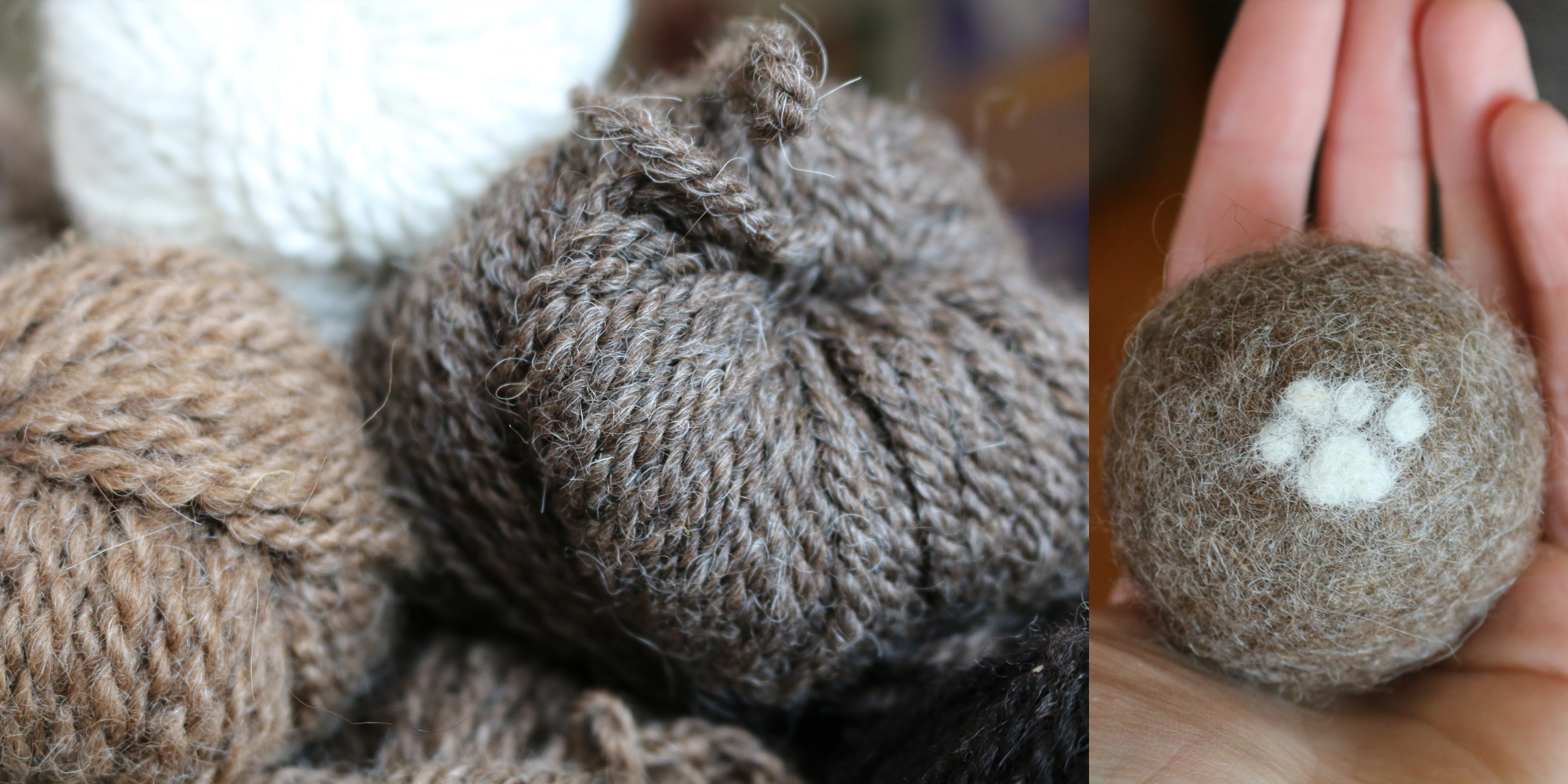 Carol also sells her sheep’s wool as part of her regular local farmer’s market stand. She sells fleece, roving, yarn, and fun items like dryer balls made by her neighbor Jackie Post, from her line called Sheep to Shop. This interaction between farmer and artisan, to produce goods available for the community, shines as a beautiful example of local agriculture and local economy working together to support the harmonious coexistence of animal, human, plant, and ecosystem within our natural landscape. Carol’s market stand reflects the diversity of her products – wool, fruits, nuts, olive oil – and the way they are grown together in harmony.
Carol also sells her sheep’s wool as part of her regular local farmer’s market stand. She sells fleece, roving, yarn, and fun items like dryer balls made by her neighbor Jackie Post, from her line called Sheep to Shop. This interaction between farmer and artisan, to produce goods available for the community, shines as a beautiful example of local agriculture and local economy working together to support the harmonious coexistence of animal, human, plant, and ecosystem within our natural landscape. Carol’s market stand reflects the diversity of her products – wool, fruits, nuts, olive oil – and the way they are grown together in harmony. 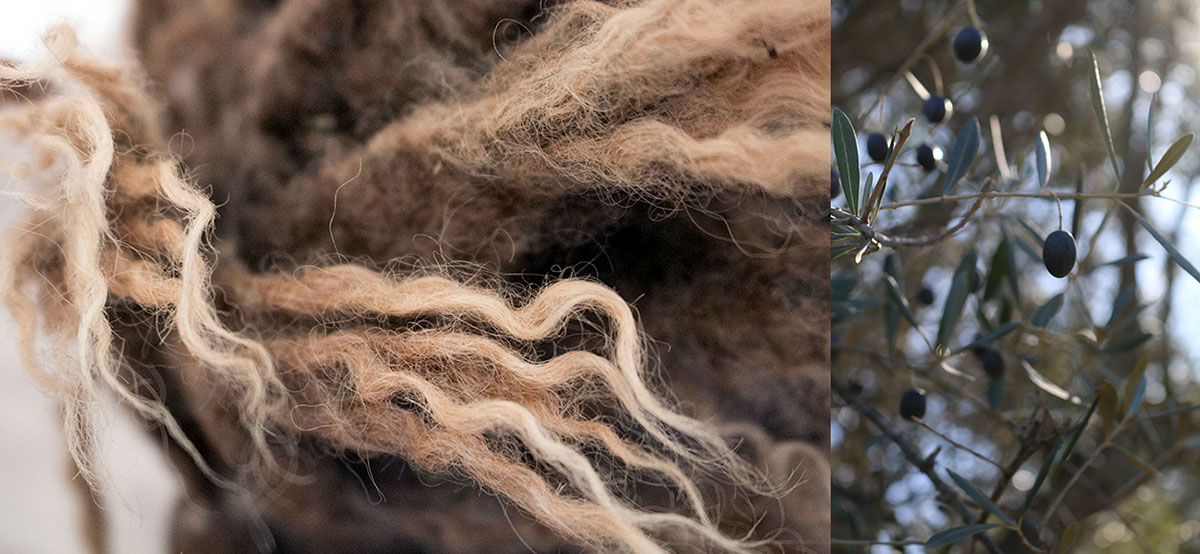 The co-benefits to diversified farming are numerous, from economic stability to increased water retention in the soil, integrated farming makes a lot of sense. Also known as Integrated Crop and Livestock Systems, ICLS works by relying upon the mutually beneficial relationships that plants, animals, and insects have with one another, as developed in nature. In the case of Joshua Farm Shetland Sheep, the sheep help keep the olive orchard grasses and blackberry brambles at bay, and as well provide the service of trimming “suckers” (the young shoots that grow from the base of the tree that otherwise need a human to prune them back). In return, the sheep are fed. And then the sheep return nutrients back to the tree’s soil in the form of bio-digested manure. The sheep produce wool, meat, and more sheep; the olive trees produce olives for olive oil. The whole system — between plant, animal, insect, soil, and atmosphere — cycles carbon and can contribute to stabilizing our climate. The orchard is better off with the services of the animal interaction, and it provided safe harbor for the sheep during fire, exemplifying how an integrated system provides resilience in nature. Carol recognizes the benefits to her animals and orchard as we walk through the dappled light, admiring both olive trees and sheep alike. Carol’s teenage daughter, Haley, and grandson, Dmitri, walk with us, occasionally petting the sheep. Also a teacher and leader with her local FFA (Future Farmers of America), Carol talks about the value and importance of passing on knowledge and opportunities to younger generations. When asked if she wants to move to a city, Haley responds immediately. “No way! I like the country.” Given the resilience of the Joshua Farm Shetland Sheep, Haley is in the right place to continue on the family’s diversified farming traditions.
The co-benefits to diversified farming are numerous, from economic stability to increased water retention in the soil, integrated farming makes a lot of sense. Also known as Integrated Crop and Livestock Systems, ICLS works by relying upon the mutually beneficial relationships that plants, animals, and insects have with one another, as developed in nature. In the case of Joshua Farm Shetland Sheep, the sheep help keep the olive orchard grasses and blackberry brambles at bay, and as well provide the service of trimming “suckers” (the young shoots that grow from the base of the tree that otherwise need a human to prune them back). In return, the sheep are fed. And then the sheep return nutrients back to the tree’s soil in the form of bio-digested manure. The sheep produce wool, meat, and more sheep; the olive trees produce olives for olive oil. The whole system — between plant, animal, insect, soil, and atmosphere — cycles carbon and can contribute to stabilizing our climate. The orchard is better off with the services of the animal interaction, and it provided safe harbor for the sheep during fire, exemplifying how an integrated system provides resilience in nature. Carol recognizes the benefits to her animals and orchard as we walk through the dappled light, admiring both olive trees and sheep alike. Carol’s teenage daughter, Haley, and grandson, Dmitri, walk with us, occasionally petting the sheep. Also a teacher and leader with her local FFA (Future Farmers of America), Carol talks about the value and importance of passing on knowledge and opportunities to younger generations. When asked if she wants to move to a city, Haley responds immediately. “No way! I like the country.” Given the resilience of the Joshua Farm Shetland Sheep, Haley is in the right place to continue on the family’s diversified farming traditions. 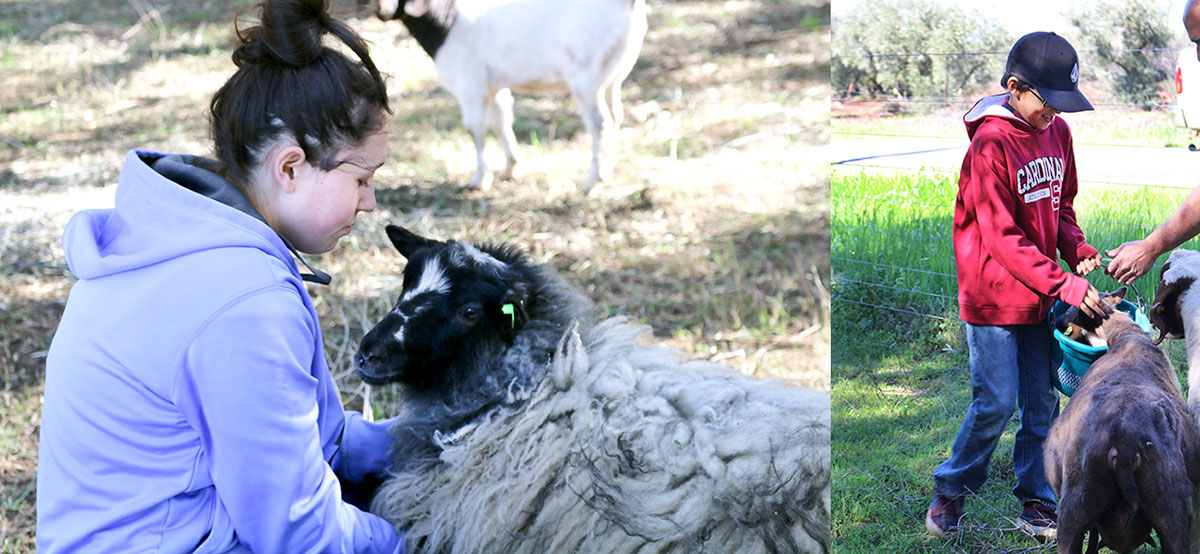 Pictured: Haley and a Shetland ewe (left), Dmitri (right) To learn more about Joshua Farm Shetland Sheep, visit them online at http://joshuafarmshetlandsheep.com/ and look for them at Lambtown, in Dixon. For a day of community presentations and case studies on fire ecology, including the role of grazing in fuel load reduction, and the benefits of reintroducing animals into croplands, join us for the 2018 Wool & Fine Fiber System. Tickets will go on sale on October 2nd.
Pictured: Haley and a Shetland ewe (left), Dmitri (right) To learn more about Joshua Farm Shetland Sheep, visit them online at http://joshuafarmshetlandsheep.com/ and look for them at Lambtown, in Dixon. For a day of community presentations and case studies on fire ecology, including the role of grazing in fuel load reduction, and the benefits of reintroducing animals into croplands, join us for the 2018 Wool & Fine Fiber System. Tickets will go on sale on October 2nd.
